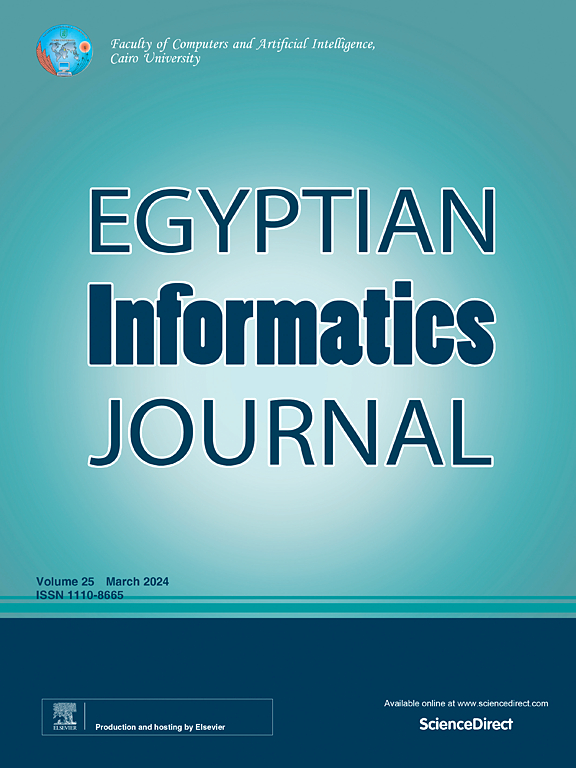Optimization of real-time transmission and coding algorithm for high quality film and television content based on 6G wireless communication technology
IF 4.3
3区 计算机科学
Q1 COMPUTER SCIENCE, ARTIFICIAL INTELLIGENCE
引用次数: 0
Abstract
Although existing video coding standards, such as H.264/AVC, H.265/HEVC, and H.266/VVC, have made some progress in compression efficiency, they still have limitations such as high computational complexity and poor adaptability to different content types. In terms of AI-based coding methods, there is still a lack of systematic research in fully leveraging the potential of 6G networks and achieving real-time transmission of high-quality film and television content. In this paper, we propose an innovative video coding framework that aims to achieve efficient and adaptive video transmission by combining traditional video coding techniques with deep learning models. The core of the framework lies in the use of convolutional neural network (CNN) to enhance the motion estimation accuracy and optimize the residual information by adaptive loop filter. In the motion estimation stage, the CNN-based model generates a high-precision motion vector field, and trains the model by minimizing the mean square error between the predicted and true values. Meanwhile, a multi-layer coding technique is introduced to adapt to different network conditions, where each layer represents a different bit rate and quality level, enabling the end device to select the appropriate decoding layer according to the current network conditions. In addition, the adaptive loop filter dynamically adjusts its parameters according to the video content to reduce compression artifacts and maintain image details. To evaluate the performance of the framework, we conduct experiments on multiple publicly available datasets, including Vid4, UHD-TEST, and HEVC standard test sequences. The experimental results show that our framework significantly outperforms conventional H.264/AVC, H.265/HEVC, VP9 and next-generation VVC coding standards, as well as deep learning-based DVC and DLVC methods in objective metrics such as peak signal-to-noise ratio (PSNR) and structural similarity index (SSIM). In particular, our framework achieves a PSNR of 42.5 dB and a SSIM value of 0.98 at 1000 kbps bit rate. In addition, our framework also performs well in 6G wireless communication environments in terms of transmission delay and packet loss, with an average transmission delay of 100 ms and a packet loss rate of 1.5 %.
基于6G无线通信技术的高质量影视内容实时传输编码算法优化
虽然现有的H.264/AVC、H.265/HEVC、H.266/VVC等视频编码标准在压缩效率方面取得了一定的进步,但仍然存在计算复杂度高、对不同内容类型适应性差等局限性。在基于ai的编码方式方面,如何充分发挥6G网络的潜力,实现高质量影视内容的实时传输,目前还缺乏系统的研究。在本文中,我们提出了一种创新的视频编码框架,旨在通过将传统视频编码技术与深度学习模型相结合,实现高效和自适应的视频传输。该框架的核心是利用卷积神经网络(CNN)提高运动估计精度,并通过自适应环路滤波器优化残差信息。在运动估计阶段,基于cnn的模型生成高精度的运动向量场,并通过最小化预测值与真值之间的均方差来训练模型。同时,为了适应不同的网络条件,引入了多层编码技术,每层代表不同的比特率和质量水平,使终端设备能够根据当前网络条件选择合适的解码层。此外,自适应环路滤波器根据视频内容动态调整其参数,以减少压缩伪影并保持图像细节。为了评估该框架的性能,我们在多个公开可用的数据集上进行了实验,包括Vid4, UHD-TEST和HEVC标准测试序列。实验结果表明,该框架在峰值信噪比(PSNR)和结构相似性指数(SSIM)等客观指标上明显优于传统的H.264/AVC、H.265/HEVC、VP9和下一代VVC编码标准,以及基于深度学习的DVC和DLVC方法。特别是,我们的框架在1000 kbps比特率下实现了42.5 dB的PSNR和0.98的SSIM值。此外,我们的框架在6G无线通信环境中在传输延迟和丢包方面也表现良好,平均传输延迟为100 ms,丢包率为1.5%。
本文章由计算机程序翻译,如有差异,请以英文原文为准。
求助全文
约1分钟内获得全文
求助全文
来源期刊

Egyptian Informatics Journal
Decision Sciences-Management Science and Operations Research
CiteScore
11.10
自引率
1.90%
发文量
59
审稿时长
110 days
期刊介绍:
The Egyptian Informatics Journal is published by the Faculty of Computers and Artificial Intelligence, Cairo University. This Journal provides a forum for the state-of-the-art research and development in the fields of computing, including computer sciences, information technologies, information systems, operations research and decision support. Innovative and not-previously-published work in subjects covered by the Journal is encouraged to be submitted, whether from academic, research or commercial sources.
 求助内容:
求助内容: 应助结果提醒方式:
应助结果提醒方式:


